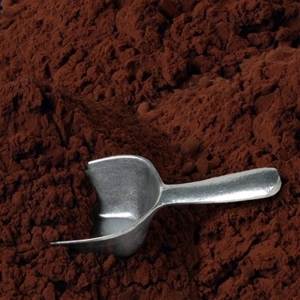This week’s Sunday musings centre on one of the most beloved and, arguably, one of the most misunderstood foods on the face of the planet: Chocolate. In fact, this past few weeks could well have been headlined ‘Chocolate Month’ on the nutrition news wires I monitor…
 As I read the message, it clearly says, ‘Go ahead and enjoy your Dark
As I read the message, it clearly says, ‘Go ahead and enjoy your Dark
Chocolate, and do something good for your gut at the same time!”
Making Milk Chocolate as healthful as Dark Chocolate?
Over the past couple of years, we’ve read a lot in the learned journals about the intrinsic healthfulness of Dark Chocolate. Dark Chocolate containing at least 70 percent Cocoa is now almost universally touted as a good source of anti-oxidant compounds called phenolics that researchers say can help reduce systemic inflammation and intestinal imbalances which can lead in turn to a whole list of body-wide conditions from heart disease to diabetes to cancer. Anti-oxidants can also help protect foods from spoiling.
But Dark Chocolate also has its drawbacks. Dark Chocolate is harder in texture, more bitter in flavour and much less sweet than the chocolate family’s undisputed most popular member: Milk Chocolate, which is almost universally featured in commercial Chocolate foods, is much less healthy in a number of ways, not the least of which is it contains less of the healthful ingredient, Cocoa, more Added Sugar, and other additives such as Milk solids and texturizers.
A natural approach to preserving Cocoa’s benefits
Researchers at Penn State University say carefully manipulating the temperature and the length of time under which Cocoa Beans are roasted can simultaneously preserve and even boost the potency of some bioactive and antioxidant compounds while protecting desired sensory aspects of Chocolate.
Study Lead Researcher Dr. Joshua Lambert says his team found that Roasting at lower temperatures can help preserve beneficial chemical compounds, while roasting at higher temperatures (up to 338 F or above) can help increase the levels of beneficial phenolic compounds, but also increase the level of ‘bitter’ tasting delicate flavour and aroma compounds. Roasting at temperatures of 212 F or lower can have just the opposite effect.
The ideal temperature for roasting Cocoa Beans to optimize phenolics and desirable flavour and aroma components? Probably right around 302 F.
Teaming up with Peanuts?
Now, a group of multi-school researchers reporting their findings to the American Chemical Society (ACS) Fall 2020 Virtual Meeting & Expo say they can boost the level of antioxidants in Milk Chocolate by blending in extracts from the skins of Peanuts, which are also high in phenolics.
The stumbling block up to now to adding phenolics to Chocolate has been that they’re bitter. But the researchers behind the ACS study say they’ve identified the threshold for phenolics in edible Chocolate products: 8 percent. At 8 percent or below, humans don’t taste phenolics. But even at as little as 8 per cent, phenolics can have significant benefits.
Yes, there are relatively many folks who have Peanut allergies. These allergies usually start at an early age and become worse as the patients grow older. But now there’s new hope for those with unusually high Peanut sensitivity by exposing them to tiny amounts of Peanuts as infants or toddlers. The Future is calling…
My take
The above-mentioned studies are just two of many on the health benefits of Cocoa and Chocolate that have been published in legitimate learned journals over the past few weeks and months. As I read the message, it clearly says, ‘Go ahead and enjoy your Dark Chocolate, and do something good for your gut at the same time!”
~ Maggie J.

